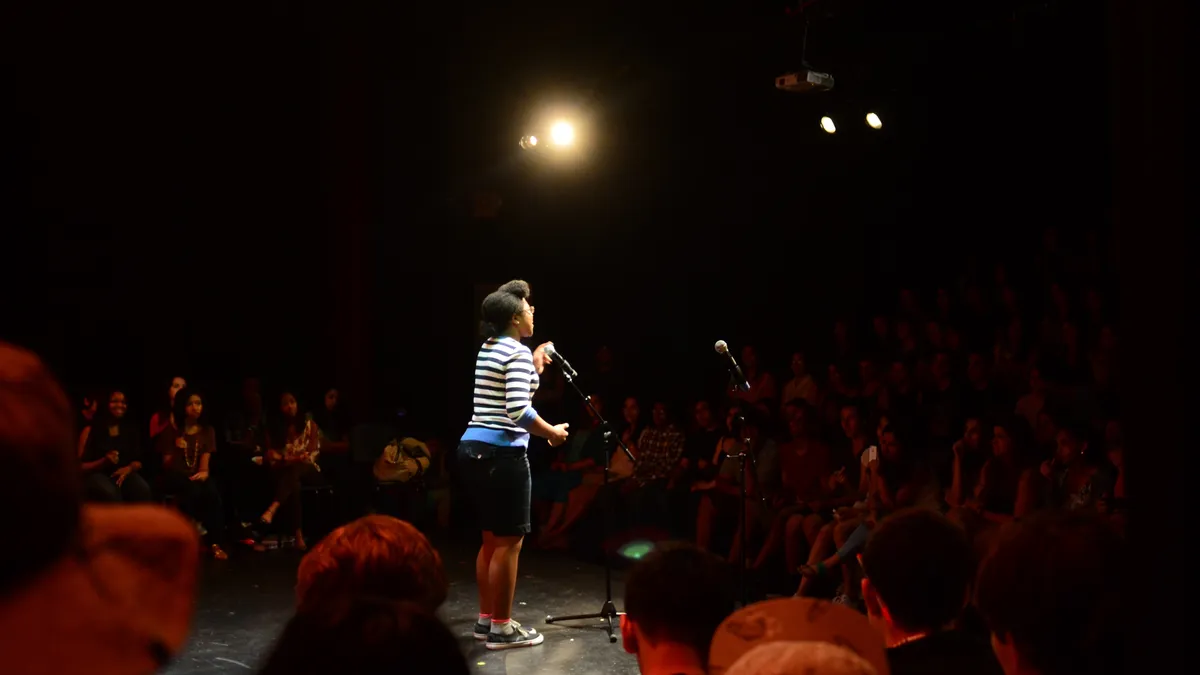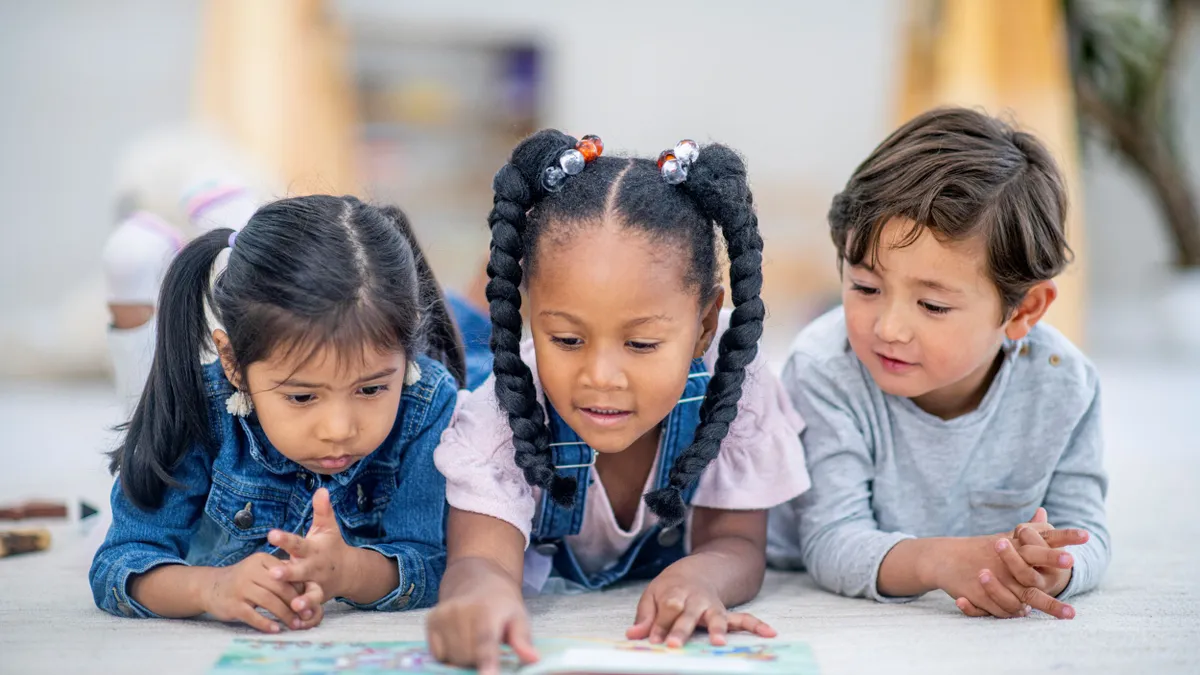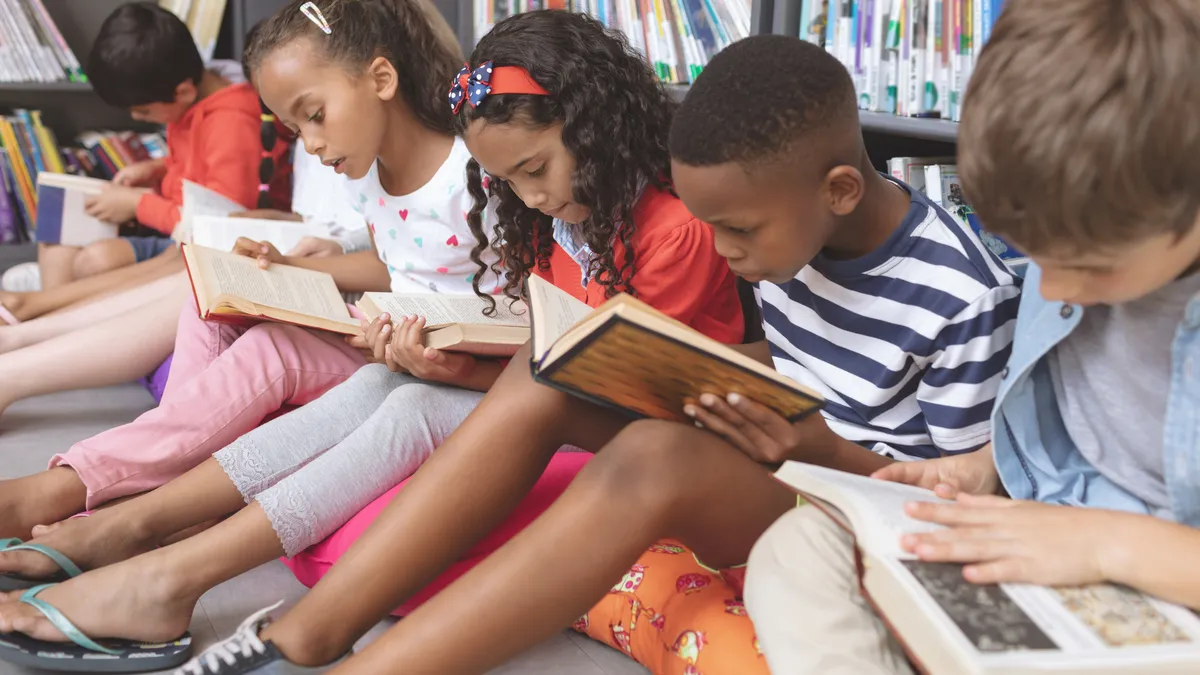In the Sharon Public Schools in Massachusetts, students are exercising their spoken word prowess in the district's first ever Poetry Slam. The district is opening the series of events — which will culminate in a final event April 25 at Sharon High School — to all students in the system, with some working on their pieces after school or during scheduled time at their school library.
High school library media specialist Cathy Collins, who grew up listening to her father recite Yeats, Dickinson and Shakespeare at the kitchen table, firmly believes the Poetry Slam project has an opportunity to bring her students closer to poetry while helping them find their own voices.
“Through creation of a safe space for poetry recitation, confidence and trust develop,” Collins, a librarian and media specialist for Sharon Public Schools, told Education Dive. “In my experience, even the quieter students will take part with encouragement and support from peers.”
Spoken word poetry is a unique hybrid, with written words memorized like lines in a play and said aloud with a performer’s flair. While studying and writing any poetry helps students develop literacy skills, spoken word also helps students build social and emotional skill sets including self-awareness, communication and self-confidence. Plus, as educators note, it’s not a bad way to get kids excited about a literary genre that doesn’t typically engender cheers.
Engaging students with poetry
Gigi Goshko, a high school English teacher at the Academy of American Studies in New York City for the past 19 years, drafted her own curriculum around spoken word poetry when she first started teaching. Working with the Academy of American Poets through a month-long program, Goshko crafted four distinct lessons — which are still available online as a unit called "Voice" — as a way to engage her 9th-grade students and help “get their feet wet with poetry,” she told Education Dive.
Goshko, currently on sabbatical for the year, would begin the unit with spoken word and segue into how to use language to make commentary on social issues.
“When you can bring something like that, and align with Common Core, it’s a good way to hook the kids,” she said.
Penny Kittle — co-author of "180 Days: Two Teachers and the Quest to Engage and Empower Adolescents” who taught at Kennett High School in North Conway, New Hampshire, for 21 years — uses March Madness-style brackets, getting students to argue why one spoken word poem should be able to move to the next round over another. She picks all the poems for the first set and then allows students to pick their own favorites.
“Kids get into groups, and debate and sell each other on which one is best, and which one should win,” Kittle, who now teaches freshman composition at Plymouth State University in New Hampshire, told Education Dive.
To Jeanne Wolz, a former teacher who now runs the blog Teacher Off Duty, spoken word's ability to touch on modern, real-world issues — things young people are familiar with, rather than events that occurred hundreds of years ago — can also help students connect with the genre. Students can draw on what they’re passionate about, rather than completing a paper on a topic they’re assigned.
“Slam poetry is the perfect medium for students to explore what matters to them, work on delivering it in a powerful way, and have a captive audience to listen to their message,” Wolz told Education Dive. “Slam poetry gives students permission to take off their masks and write from the heart — and you can't get much closer to a teacher's dream than that.”
Enhancing performance skills
As its name suggests, spoken word needs to be told aloud — performed in a setting where cadence, rhythm and often a sense of staging come into play. Getting up in front of people and having to read what they’ve crafted requires students to tap into their self-confidence. That’s not always a strength for every child, and yet Wolz says knowing that they have to deliver a spoken word piece aloud at the end of crafting it can help them discover something about themselves they didn’t know they had.
“It can be the push for students to get the courage to stand up and speak in front of their classmates,” she said. “It also helps them see the incredible messages they're capable of as writers.”
While not centered on spoken word, the Poetry Out Loud program is also focused on turning poetry into a performance piece. Students pick one of more than 1,000 poems to memorize and then deliver them aloud. While they don’t write their own poetry as they would with spoken word, the same act of standing up and speaking before a group of people helps students tap into the language and understanding of a piece, said Justine Haka, program manager for the Poetry Foundation, which co-created Poetry Out Loud with the National Endowment for the Arts.
“In order for the students to be able to memorize the poetry and in turn give it back to the audience, they must internalize the poem,” Haka told Education Dive. “Many students will research the poem, its context and its author to try and figure out why the poem was written. The contest asks the performers to step into the author’s shoes and into the language of the poems. It’s a much more in-depth, active study of the poetry.”
Teachers take part, too
Getting students engaged in spoken word does require more than searching out YouTube videos of spoken word poets, pushing play and asking kids to craft their own. Instead, educators should be prepared to jump in and take part in the process. Students who are uncomfortable with the process of writing, in particular, will benefit from mirroring teachers who aren’t afraid to show their own spoken word skills — live and in-class.
Kittle said she would often show students, in front of the class with a document camera, how she was crafting words, revising a line and thinking as she put together her own work. The goal is not to intimidate them, but to expose them to what it takes to create and express an idea and thought, which educators hope students can eventually do whether they become spoken word poets or not.
“I think to teach any kind of writing, the teacher has to write,” she said. “You have to expose the struggle of really good writing, throwing that first thought on the page and then going back and listening to it.”






 Dive Awards
Dive Awards















